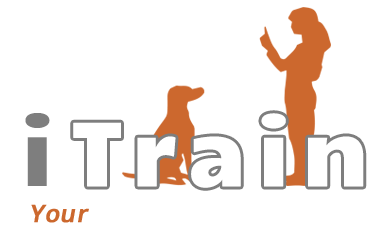Bringing a New Dog Home
While bringing a new dog home is an adjustment, you can use this information to set your home and relationship up for success right from the beginning. Whether they are a new puppy or a rescue dog, the process is the same. Keep in mind that an older dog that has a past life history may need to work through some previous behavior issues that have cropped up. However, if you set a strong foundation from the get-go, you won’t have to go back and fix learned inappropriate behaviors. While it is possible to “undo” these behaviors and you would use the same directions to fix them, it is always easiest and quickest if you start by setting clear boundaries from the first day you bring them home.
I want you to imagine that you’ve just moved to a foreign country with a completely different cultural norms and language. You wouldn’t know how to act, what’s acceptable, or how to communicate in your new home. There would certainly be relief from you if you received a book of guidelines to address the boundaries and norms of the society you were immersed in. Unfortunately we cannot give our dog a book of guidelines to read, but we can teach them easily by following these steps consistently for 4-8 weeks with these tips.
- Educate your dog – Take time to educate your dog from the start. It is crucial for any dog to understand the 4 foundation words. This is how you will encourage wanted behaviors and work through unwanted behaviors.
- Use a drag leash on your dog at all times when supervised – A drag leash is a fine thread leash or rope that you have attached to your dog’s collar. It gives you a way to guide and redirect your dog without having to physically grab them. Constantly grabbing at your dog to correct inappropriate behaviors teaches your dog to avoid you or run away when reaching for them. Your dog should have a drag leash on throughout the training process until they understand consistently what is expected of them. Once your dog understands the 4 foundation words, they will no longer need this tool.
- Have a safe place to put your dog when you cannot supervise them – This could be a crate, a laundry room, a spare bedroom or a dog run.
 Managing your dog while you are not able to supervise will set them up for success by not allowing them to practice inappropriate behaviors during this time. Your dog will need plenty of supervised time loose so they can learn the rules, but only while you are able to pay attention to them. Feed them and give them goodies and safe chews while they are spending time in their place. The goal is to give your dog a safe, comfortable, and inviting space to hang out while you can’t be with them. A laundry room or spare bedroom can be great for some dogs, but be cautious with this (as I’m sure you’ve seen the Facebook pictures of the destruction unattended dogs can cause in these spaces). I prefer using a crate as usually you can pretty quickly teach a dog that their crate is wonderful resting place. However, there are a few exceptions to this. If you are struggling at getting your dog to like his or her crate, you may want to speak with a trainer to come up with a good alternative to crating.
Managing your dog while you are not able to supervise will set them up for success by not allowing them to practice inappropriate behaviors during this time. Your dog will need plenty of supervised time loose so they can learn the rules, but only while you are able to pay attention to them. Feed them and give them goodies and safe chews while they are spending time in their place. The goal is to give your dog a safe, comfortable, and inviting space to hang out while you can’t be with them. A laundry room or spare bedroom can be great for some dogs, but be cautious with this (as I’m sure you’ve seen the Facebook pictures of the destruction unattended dogs can cause in these spaces). I prefer using a crate as usually you can pretty quickly teach a dog that their crate is wonderful resting place. However, there are a few exceptions to this. If you are struggling at getting your dog to like his or her crate, you may want to speak with a trainer to come up with a good alternative to crating.
- Give them plenty of supervised free time – This is the biggest part of teaching your dog the new rules. Free time is where you will start shaping what you want and teaching them what is acceptable behavior and what is not. If you are not able to fully supervise your dog during free time, then utilize a management strategy such as a tie-out or crate.
- Use tie-outs for partially supervised time – A tie-out is a short leash anchored to a stationary object in your house. These are useful for times when you are unwinding and cannot have full attention on training your dog, but still want them around and present. Tie-outs should always be used in your presence, as you need to be around in case they get tangled. They should be short, but long enough for the dog to lay down comfortably. You can use them in conjunction with a bed and give them toys and chews to interact with. Some great examples of tie-outs include a leash around a door knob, or tethered to a couch or table leg. I install an eye bolt in the wall (anchored to a stud, of course) and loop a leash to it. Tie-outs are extremely useful for preventing unwanted behaviors while you cannot have your full attention on your dog, conditioning them to be calm during down time, and avoiding rude greetings at the door while you are in the learning phase of training. Be sure to read our detailed article about tie-outs before using this strategy with your dog.
- Show them appropriate ways to have fun – Give them a toy box filled with an assortment of toys, play games such as fetch, have training time where you have fun teaching them new behaviors. This will strengthen your relationship with your dog while getting them used to engaging with you.
If you take the time to utilize the strategies listed above, you will soon be enjoying your new dog! These strategies are the guidebook your dog needs to navigate the foreign country they just moved to. You will have an understanding of each other and they will know what the house rules are from the moment they enter your home . If you take the time to show your dog what you want, the majority of dogs will be happy to follow along and they will be calmer and happier because of it!
